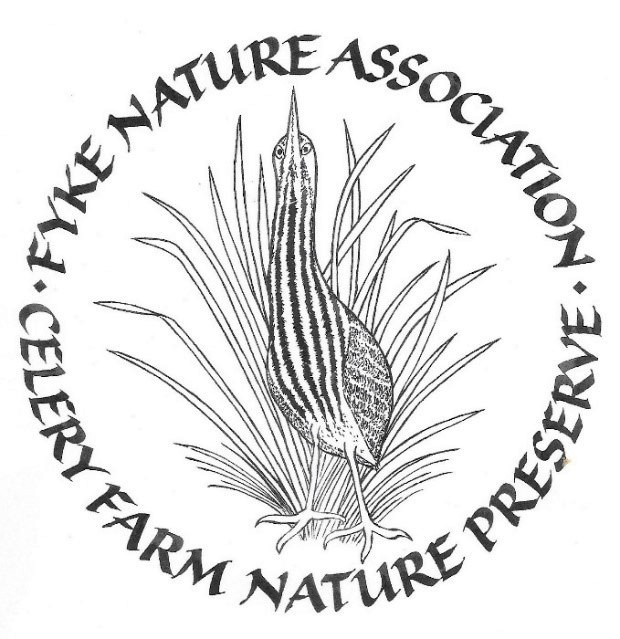Celery Farm Habitat Management

The Borough of Allendale appoints the Celery Farm Warden, who is responsbible for the Nature Preserve with the assistance of the Fyke Nature Association volunteers.
The Celery Farm Ecosystem is the habitat for everything that lives in the Preserve or passes through in migration. The diversity of plant life is documented in this Inventory of the Celery Farm Flora done in 2021.
The work of Habitat Restoration requires the dedicated efforts of the volunteers who find personal satisfaction in helping the native plants to flourish. If you are interested in becoming a volunteer with Fyke, check out our Volunteer Opportunities.
Habitat Management Projects
Butterfly Garden
The Butterfly Garden was created in the 1990s by women members of Fyke and has been maintained ever since thanks to their continuing efforts. Located next to a bench and the abandonned farm tractor, it is enjoyed by all who pause there on their way around the Lake Appert trail.
Green Way Meadow
Beginning with planting Hackberry trees in 2004 and followed by Mugwort removal in 2010 replaced with native grasses and Mountain Mint, the Green Way Meadow at the end of Green Way and the adjacent Back Meadow next to Phair's Pond has been a focus of the work of encouraging native plants to take hold.
Deer Exclosure Fenced Area
In 2018 Fyke funded the Celery Farm Management Plan that recommended a deer exclosure to protect the native plants from the deer. Subsequently, Fyke funded the deer exclosure that is located between Lake Appert and Phair's Pond, bounded by trail markers 9, 10, 19, and 24 as found on the Celery Farm Map.
Click the link to watch a recording of the Fyke Program presentation What's Growing Inside the Celery Farm's Deer Exclosure? given on September 22, 2023.
East Side Native Plant Garden
Autumn olive is a deciduous shrub native to Asia that has spread as an invasive species throughout the United States. It is a problem because it outcompetes and displaces native plants. It does this by shading them out and by changing the chemistry of the soil around it, a process called allelopathy. Loss of native vegetation can have cascading effects throughout an ecosystem. You can read more about our efforts to control invasive plants here.
In 2023 a team of volunteers set about removing the invasive Autumn Olive overgrowth from along the Allendale Brook and across the path beside Lake Appert, as well as from beside Phair's Pond. This project required digging up the roots of many hundreds of well-established shrubs. Some of the invasive material was recycled and used to make neatly stacked piles of cut branches creating small bird habitat structures. The cleared area between Lake Appert and the Allendale Brook was replanted in the early spring of 2024 and protected with temporary fencing while the plants get established. It is now the East Side Native Plant Garden.
Phragmites Control
The invasive Phragmites reeds that dominate the margin of Lake Appert have been an ongoing problem at Celery Farm. The frozen ground in winter provides an opportunity to cut down the phragmites. The volunteers who cleared the area along the trail from the No Name culvert south to the observation bench worked very carefully, removing and enclosing the phragmites seed heads first, to prevent the seeds from dispersing. Then the Phragmites were used to provide winter insulation for the new Butterfly pollinator meadow site. The aim going forwards is to cut the phragmites in late July before it sprouts seed heads, thereby weakening them over a number of years.
This is part of a long term plan to first try and stop the spread of the Phragmites, and then use cattail seeds and select tall native plants to try and compete with Phragmites.
Meadow Lane Overgrowth
The volunteer team worked frequently over the winter of 2023-2024 to clear the area bounded by Meadow Lane of invasive shrubs and the vines that were strangling the trees. The trees were all killed by the vines and needed to be taken down as part of the site clearing effort.
Because this is a large area, the project to remove the invasives and replant natives will be done in sections, extending over several years. The next phase will be to plant native trees along with other native plants in the cleared area. The native plants may vary from this list, but this Bloom Sequence table provides a preview of what to expect.
Through careful planning and execution, the Celery Farm land between Meadow Lane and Lake Appert can be restored over time. It can be part of a beautiful native ecosystem that gives new meaning to the idea of biodiversity at Celery Farm, as a gradual rehabilitation occurs over the next few years.
Pollinator Meadow
The direction of a planned Pollinator Meadow adjacent to the Butterfly Garden will be determined by the women who maintain the Butterfly Garden following a consultation with a Rutgers Agriculture and Natural Resource Agent.
